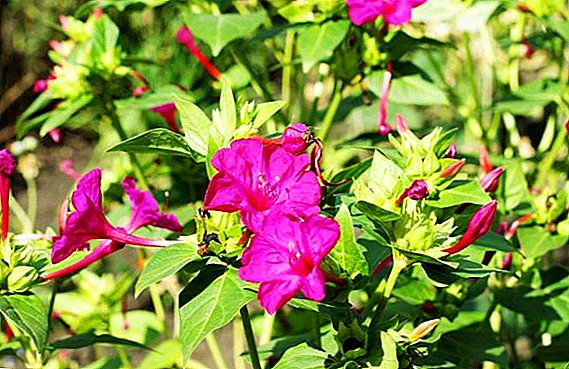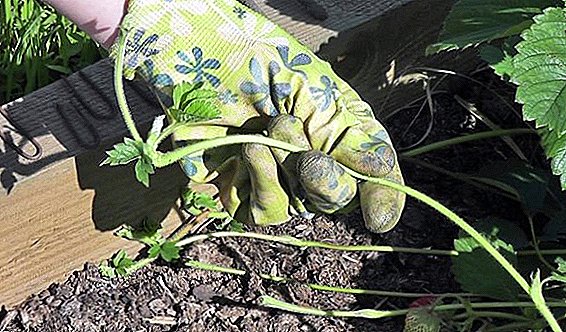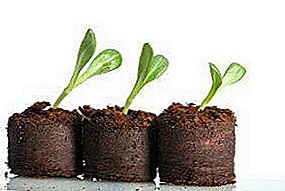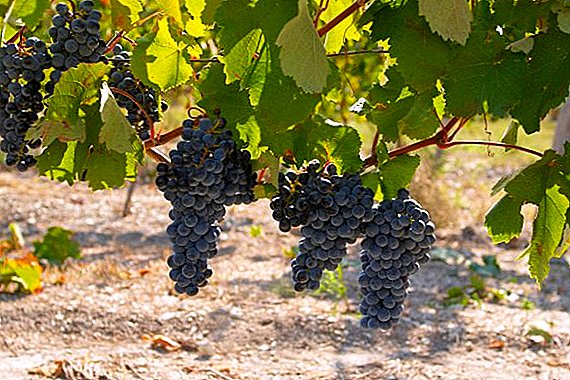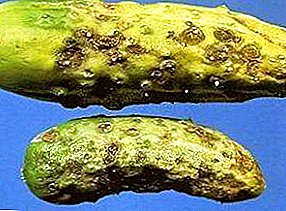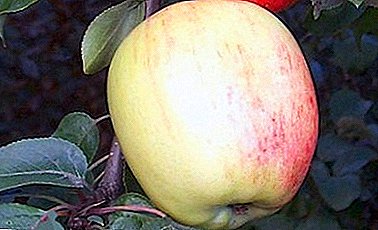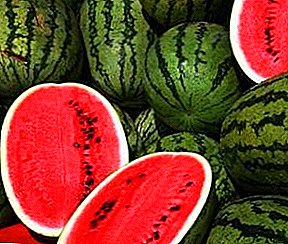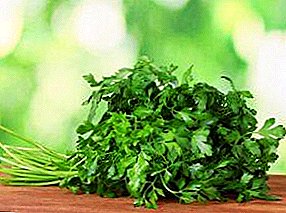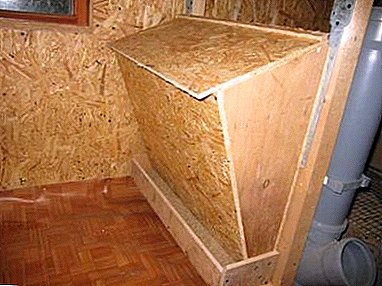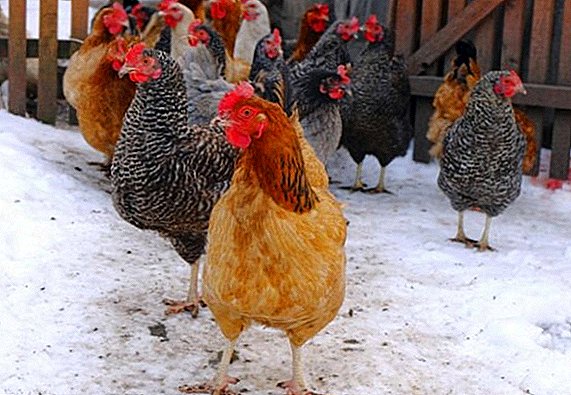 The snow cover consists of water crystals, mineral impurities and organic matter, frozen at a temperature below 0 ° C. The benefits of snow cover for plants are repeatedly described and obvious. But the question of whether there is a benefit for chickens is not so obvious and requires detailed consideration.
The snow cover consists of water crystals, mineral impurities and organic matter, frozen at a temperature below 0 ° C. The benefits of snow cover for plants are repeatedly described and obvious. But the question of whether there is a benefit for chickens is not so obvious and requires detailed consideration.
Chemical composition of snow
The chemical formula of pure snow is two hydrogen molecules and one oxygen molecule, that is, water in the solid state. But usually the atmosphere includes a lot of man-made components - dust, oxides of sulfur and nitrogen, the products of construction companies, ferrous metallurgy, mining and chemical industries.
The volume of pollutants depends on the intensity of emissions into the atmosphere, the proximity of sources of pollution and prevailing winds. With a standard level of acidity for urban precipitation, equal to 5.97 pH, the acidity of snow within the city can vary from 5.7 to 6.7 pH, which indicates a weak acid reaction.
We advise you to read about how to give grass, live food, fish oil and yeast to chickens, and whether it is possible to give bread, salt, garlic and foam to chickens.
According to the recommendations of Agrogrin Company LLC for poultry farming, the acidity index should be in the range of 6-7 pH, which means that snow with a slightly acid or neutral reaction does not harm chickens.  With alkalinization and acidification, an increase in mineralization and technogenic transformation of the water composition occurs.
With alkalinization and acidification, an increase in mineralization and technogenic transformation of the water composition occurs.
Important! The acidic environment provokes cardiovascular diseases, diseases of the skeletal system, and also contributes to the development of viruses, fungi, helminths. If there are many sources of acidification, the body's immune system suffers from overload, which reduces the body's resistance to disease.
Other characteristic indicators for water solutions used in poultry farming:
- hardness - 7-10 mg / eq l;
- nitrates (NO3) - no more than 45 mg / l;
- sulfates (SO4) - no more than 500 mg / l;
- chlorides (Cl) - no more than 350 mg / l;
- mineralization - 1000-1500 mg / l.

Useful properties of snow for chicken
The beneficial properties of snow, turning into a room in the melt water, have been noted by our ancestors. The benefit is due to the change in the aggregative state of the liquid. Freezing, water gets a crystalline structure, which displaces particles of organic matter and heavy metals.
Did you know? 95% snowflakes - this is air and the remaining 5% - crystallized water. It is the air that paints the snow white; Rays are repelled by ice crystals and scattered.
When the ice begins to melt, the purified liquid is first released, which is perfectly absorbed by the body and helps to speed up the metabolism, cell regeneration, and restoration of the health of body systems.
That part of the ice that did not immediately thawed out, the core of the ice, is ejected, because it concentrates all the harmful substances contained in the water. Therefore, it would be more beneficial for the chicken not to have the snow consumed along with everything contained in it, but a thawed liquid from ice and frozen snow. 
Harm and consequences of drinking snow chicken
Opponents of the use of snow as an element of the diet indicates the following points:
- This micro ice along with dust and all that was in the atmosphere. And even melted, the liquid will contain all the atmospheric debris. If the chicken consumes such a liquid, it will only harm its body.
Did you know? Japanese scientist Nakaya Ukitiro first classified snowflakes. He called the shape of snowflakes - hieroglyphs written by the sky. In honor of the scientist on the island of Hokaydo a museum of snowflakes was created.
- The snow does not contain the necessary trace elements for the bird, so it does not benefit.
- The temperature of the ice is conducive to the occurrence of colds.

Arguments supporters of snow in the diet of chickens:
- The main property of snow is a modified crystal structure of molecules, which brings the main benefits.
- The hen inhales the atmosphere along with the contents and the snow will be no more harmful than the atmosphere itself.
- In winter, the dust content in the atmosphere is lower than in summer, and the content of nitrogen oxides and heavy metals depends on the presence of industrial emissions.
- Chicken consumes snow regularly and in small quantities.
- Studies of the effect of melt water on the body exist, and research on the effect of air mineralization has practically not been conducted. The composition of the air changes all the time.
Of course, if the chicken eats a lot of snow, it can overcool and get sick. But this is not food, and the bird independently regulates the amount of substance eaten. At the same time, snow does not replace water in the diet. Replace the melt water can be no more than 30% of the liquid.  To give or not to give snow to chickens, only the owner himself decides. After all, there are not so many scientific data confirming any of the points of view.
To give or not to give snow to chickens, only the owner himself decides. After all, there are not so many scientific data confirming any of the points of view.
Wintering chickens
The maintenance of chickens in the winter requires care both about the conditions of housing and about the reinforced diet in the cold season. Violations in the content and nutrition cause a decrease in egg production and may contribute to an increase in the incidence of respiratory infections.
It will be useful for you to read about how to keep chickens in the winter season, as well as how to feed chickens in winter for egg production.
Features of the process of feeding and nutrition
Winter diet is very depleted in vitamins, and in addition:
- no grass;
- of vegetables, only roots can be included in the diet;
- there is no possibility to supplement the diet with animal proteins: larvae, worms, beetles;
- insufficient amount of sunlight;
- short daylight hours.
Content Features
The coop is warmed even for frost-resistant rocks. Air temperature affects the egg production of most chickens. It takes a lot of energy to maintain body temperature, so the bird may not have enough strength to lay eggs.
The air temperature inside the chicken coop should not fall below + 12 ° С. To improve egg production, prolong daylight hours to 12-14 hours using artificial light. To do this, the chicken coop is equipped with fluorescent lamps. It is necessary to place lamps and electrical wiring in places inaccessible to birds.  The litter should be dry and thick. It uses peat, dry hay, sawdust. Humidity of winter air is 85-95%. It is necessary to ensure the humidity in the hen house is not higher than 75%. To do this, use the exhaust ventilation, heaters, infrared lamps, air dryers.
The litter should be dry and thick. It uses peat, dry hay, sawdust. Humidity of winter air is 85-95%. It is necessary to ensure the humidity in the hen house is not higher than 75%. To do this, use the exhaust ventilation, heaters, infrared lamps, air dryers.
Learn what to do with obesity in laying hens.
Features of the diet of poultry
For the winter diet it is necessary to make reserves in the summer:
- dried grass in May-June;
- coniferous flour in May;
- sen in August;
- root crops and cabbage in September-October.
These components will replenish the supply of vitamins during the cold season. A good vitamin supplement in the winter will be pumpkin, carrot, beet, germinated grain, cabbage.
The rate of feed per 1 hen:
- for chicken egg breed - 120 g;
- for chicken meat breed - 150 g
 In winter, the calorie content of the feed should increase, which is due to broth mash and the addition of yeast.
In winter, the calorie content of the feed should increase, which is due to broth mash and the addition of yeast.Grain component consists of:
- wheat - 50%;
- corn - 30%;
- barley - 20%.
Important! Bran is a natural natural adsorbent. Their main task - remove harmful substances and toxins from the body. Their presence is mandatory both in the summer and in the winter diet.
Replace with other types of grain can be no more than 20% of the main grain feed. As in the summer, chickens should have enough water, chalk, shells, and gravel. 
What can feed chickens
In the winter diet should be (in grams):
- bran - 10;
- serum - 14-20;
- grass meal - 5;
- meat and bone meal - 5;
- cake - 12 g.
Read more about what can be given to chickens and what not, as well as how to feed chickens.
Yeast feed is carried out 1 every 2-3 days. Mash must be in nutrient solutions - broth, whey. 
What can not feed chickens
Chickens can not be fed:
- green potatoes, because the solanine contained in it is a toxic substance;
- potato peelings;
- citrus peel due to poor digestibility;
- additives intended for pigs due to their high salt content;
- baking, cakes and cakes due to fat;
- jam due to high sugar concentration;
- sausages and sausages due to preservatives, thickeners, dyes, flavors.
Video: what can not feed chickens The key to good egg production in winter is a balanced diet and comfort for the hens in the chicken coop and on the range. Proper nutrition of poultry is guaranteed to provide you with eggs, and your hens health.
Did you know? Most frost-resistant rocks walk well in shallow snow, and Iceland landraces even fly. But it is important to take into account that such walks are contraindicated for representatives of decorative rocks due to feathered paws and a tendency to hypothermia.


